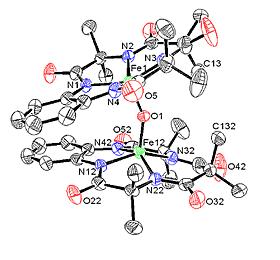Carnegie Malone University researchers believe that environmentally friendly catalysts/catalysts that clean various pollutants may be more effective than has been proven so far

Tetra-Amido Macrocyclic Ligands (TAMLs) are environmentally friendly catalysts with many applications for the reduction and cleaning of various pollutants and are a representative example of "green chemistry". The inventor of the catalyst, Terry Collins from Carnegie Mellon University in Pennsylvania, USA, believes that this small molecule may be effective far beyond what has been proven so far.
Collins discussed the activity of iron-ligands (Fe-TAMLs) and their other areas for future research, based on evidence from kinetic and mechanistic experiments of the catalysts, at the 236th National Conference of the American Chemical Society held in Philadelphia last August.
These oxidation catalysts are the first highly efficient mimics of peroxidase enzymes. Together with hydrogen peroxide, they are able to convert dangerous pollutants into less toxic substances. The new materials, which consist of basic elements of biochemistry such as carbon, hydrogen, nitrogen and oxygen surrounding an active iron center, are less toxic and active at extremely low concentrations. In addition, they have strong chemical bonds that are not broken down by active oxygen intermediates formed during the reaction with hydrogen peroxide.
"Our latest studies regarding what happens during the chemical reaction carried out by the new ligands prove that they are indeed very close mimics of peroxidase enzymes," asserts Collins, professor of chemistry and director of the green science center at the university. "By knowing the mechanisms of the reactions we are able to tune the catalysts for improved performance."
The research of Collins and his group showed that these new materials have enormous potential to provide clean and safe alternatives to existing industrial methods and provide ways to reduce the number of other urgent environmental problems that currently lack solutions. The catalysts have been shown to be effective in breaking down estrogenic compounds, in cleaning contaminated water from the textile industry, in reducing fuel contamination, in treating by-products of the paper industry and in purifying benign anthrax.
